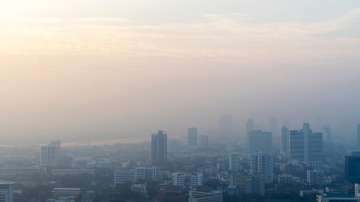EXPLAINED: The connection between Air Pollution and Type 2 Diabetes
The study has provided strong evidence of the link between air pollution and type 2 diabetes. It has also shed light on the urgent need for immediate action to reduce air pollution levels and protect public health.

Air pollution has become a major global health crisis, with its adverse effects on respiratory and cardiovascular diseases well-documented. However, recent research has shed light on another alarming consequence of air pollution – its link to type 2 diabetes. A landmark Indian study has revealed a strong correlation between exposure to high levels of air pollution and the development of type 2 diabetes. Let's delve deeper into this groundbreaking study and understand the implications of its connection to our health.
The study published in the British Medical Journal (BMJ) analysed data from over 12,000 participants from Delhi and Chennai from 2010 to 2017. The participants were middle-aged adults who did not have diabetes at the start of the study. They were followed for three years, during which their blood sugar levels and exposure to air pollution were monitored.
The results were startling – for every 10 micrograms per cubic meter increase in delicate particulate matter (PM2.5) in the air, there was a 22% increase in the participants' risk of developing type 2 diabetes. PM2.5 refers to tiny particles smaller than 2.5 micrometres in diameter, which are released into the air from various sources such as vehicle emissions, industrial activities, and the burning of fossil fuels.
The findings of this study are particularly significant for India, as it is home to 14 out of the top 20 most polluted cities in the world, according to World Health Organization (WHO) data. The air quality in these cities often surpasses the safe limits set by WHO, making it a major public health concern.
According to the Guardian report, a Lancet study has found that a higher number of diabetics reside in Urban India. It has also found India’s diabetes prevalence to be higher than previous estimations.
Siddhartha Mandal, the lead investigator of the study and a researcher at the Centre for Chronic Disease Control, Delhi, said, "Given the pathophysiology of Indians – low BMI with a high proportion of fat – we are more prone to diabetes than the western population."
Dr V Mohan, chairman of the Madras Diabetes Research Foundation and one of the paper's authors stated, "Until now, we had assumed that diet, obesity and physical exercise were some of the factors explaining why urban Indians had a higher prevalence of diabetes than rural Indians."
He also added, "This study is an eye-opener because now we have found a new cause for diabetes that is pollution."
But how exactly does exposure to air pollution lead to type 2 diabetes? The answer lies in inflammation and oxidative stress – two processes triggered by the fine particles in polluted air. Inflammation refers to the body's response to harmful substances, while oxidative stress occurs when there is an imbalance between free radicals and antioxidants in the body.
When we inhale polluted air, the tiny particles can enter our bloodstream and cause inflammation in various organs, including the pancreas. The pancreas is responsible for producing insulin, a hormone that regulates blood sugar levels. Inflammation in the pancreas can lead to damage and dysfunction of beta cells, which are responsible for producing insulin. This can ultimately result in insulin resistance and type 2 diabetes.
Moreover, the particles in polluted air can also generate oxidative stress by producing free radicals. These unstable molecules can damage cells and impair their function, including those involved in insulin production and glucose metabolism. This can contribute to the development of insulin resistance and type 2 diabetes.
PM2.5 contains black carbon, nitrates, sulfates and heavy metals that can stiffen the arteries which can lead to high blood pressure and can also damage the lining of blood vessels. Dr Dorairaj Prabhakaran, cardiologist and executive director of the Centre for Chronic Disease Control and one of the authors of the paper, said that the particles in PM2.5 can attack the heart muscle and can also cause inflammation as they get deposited in the fat cells.
Prabhakaran said that the finding of the study is alarming; however, it has given hope to scientists that reducing pollution can decrease the risk of diabetes and other non-communicable diseases such as Parkinson’s, Alzheimer’s, stroke, asthma, etc.
The implications of this study go beyond just India – it is a wake-up call for countries around the world to take action against air pollution.
So what can be done to mitigate this issue? Governments and policymakers must prioritise measures to reduce air pollution levels, such as promoting cleaner modes of transport, stricter emission standards for industries, and transitioning from fossil fuels to cleaner sources of energy. Individuals can also play their part by reducing their contribution to air pollution – using public transport or walking/cycling instead of driving, choosing eco-friendly products, and properly disposing of waste.
Aside from reducing air pollution, it is also important to focus on building resilience against its effects. This can be done through regular physical activity, a healthy diet, and managing other risk factors for type 2 diabetes such as obesity and smoking. The study also highlighted the importance of timely screening and early detection of diabetes in high-risk individuals living in highly polluted areas.
ALSO READ: Are Sudden Heart Attacks Linked to COVID-19 Infection? EXPLAINED